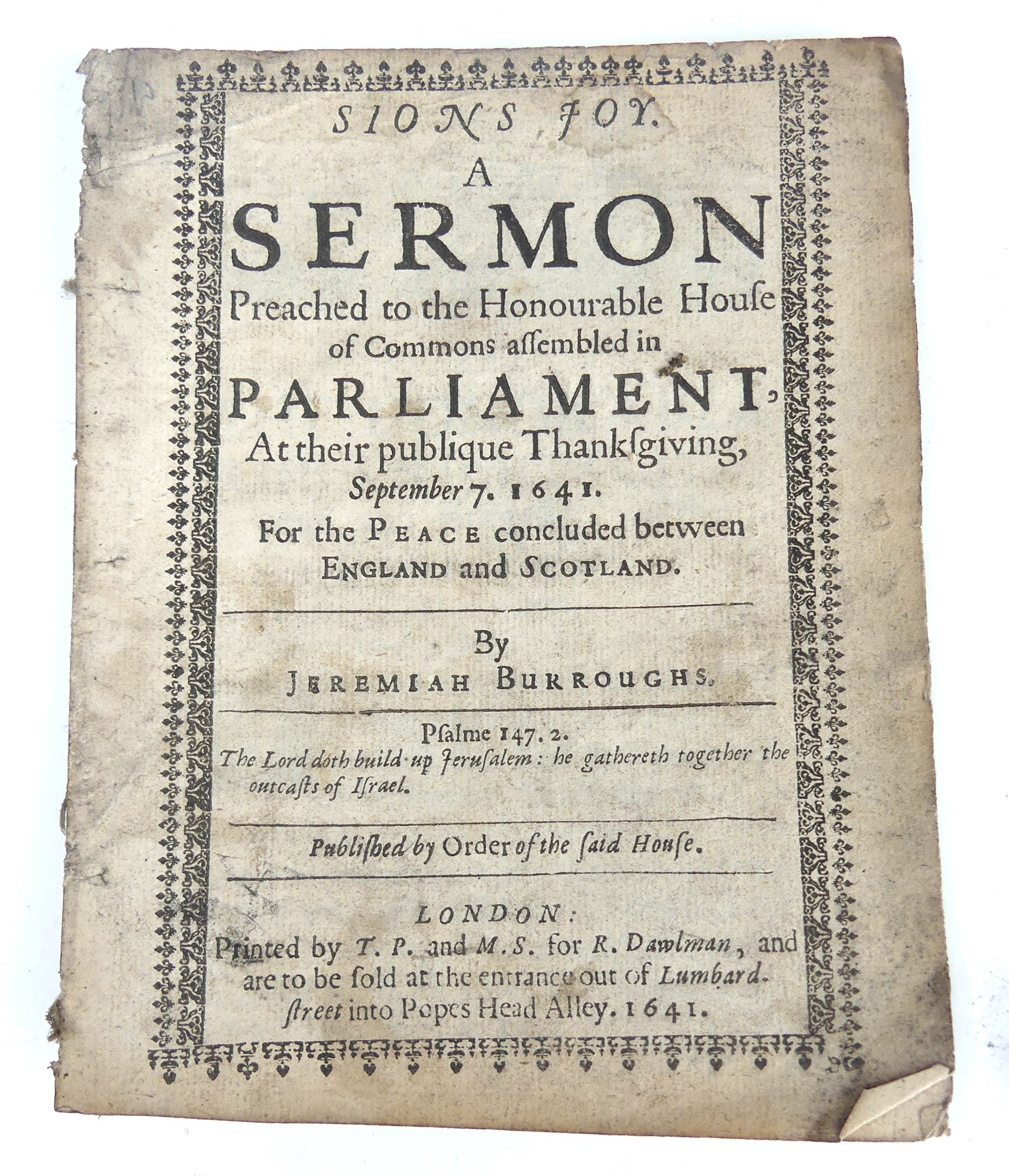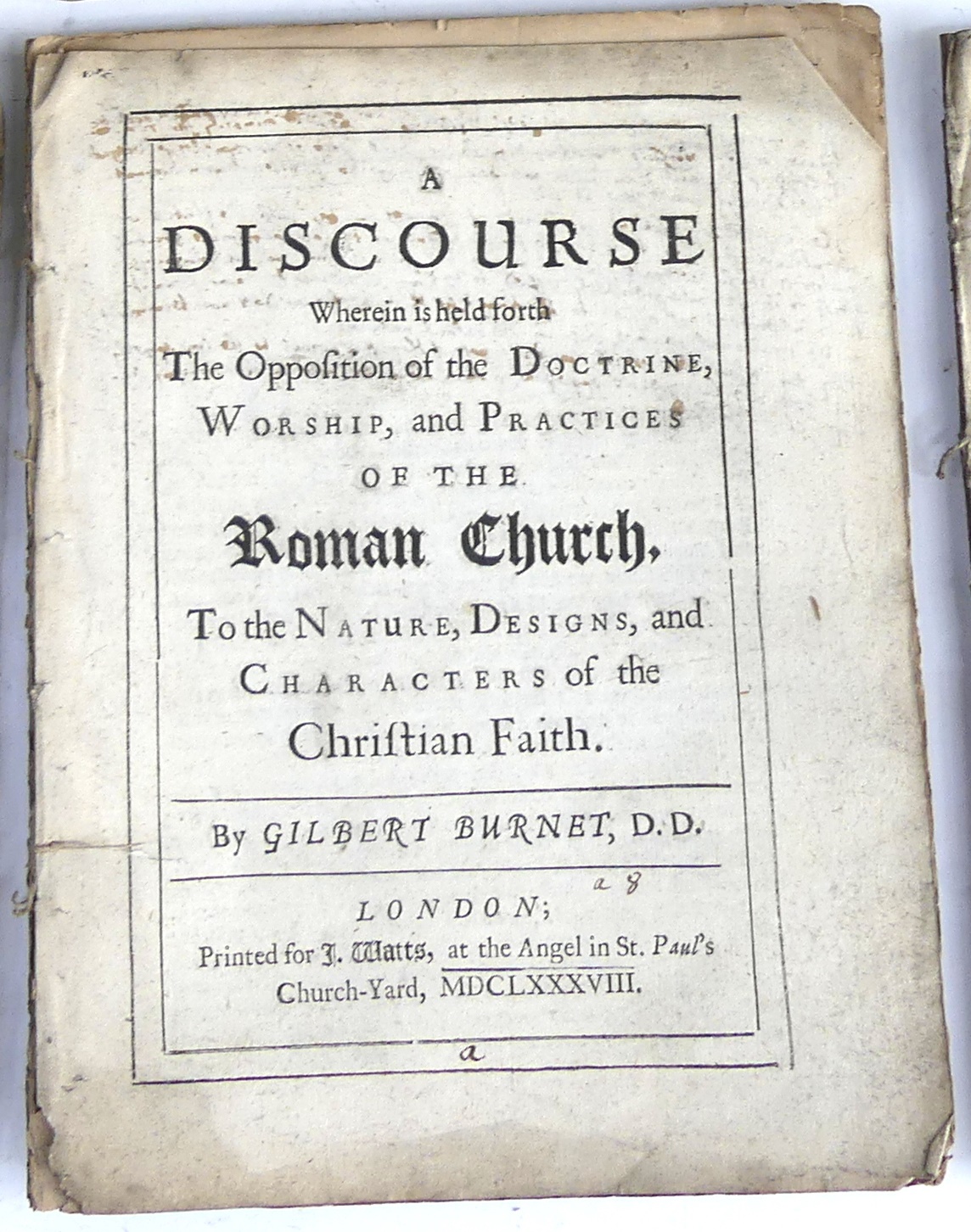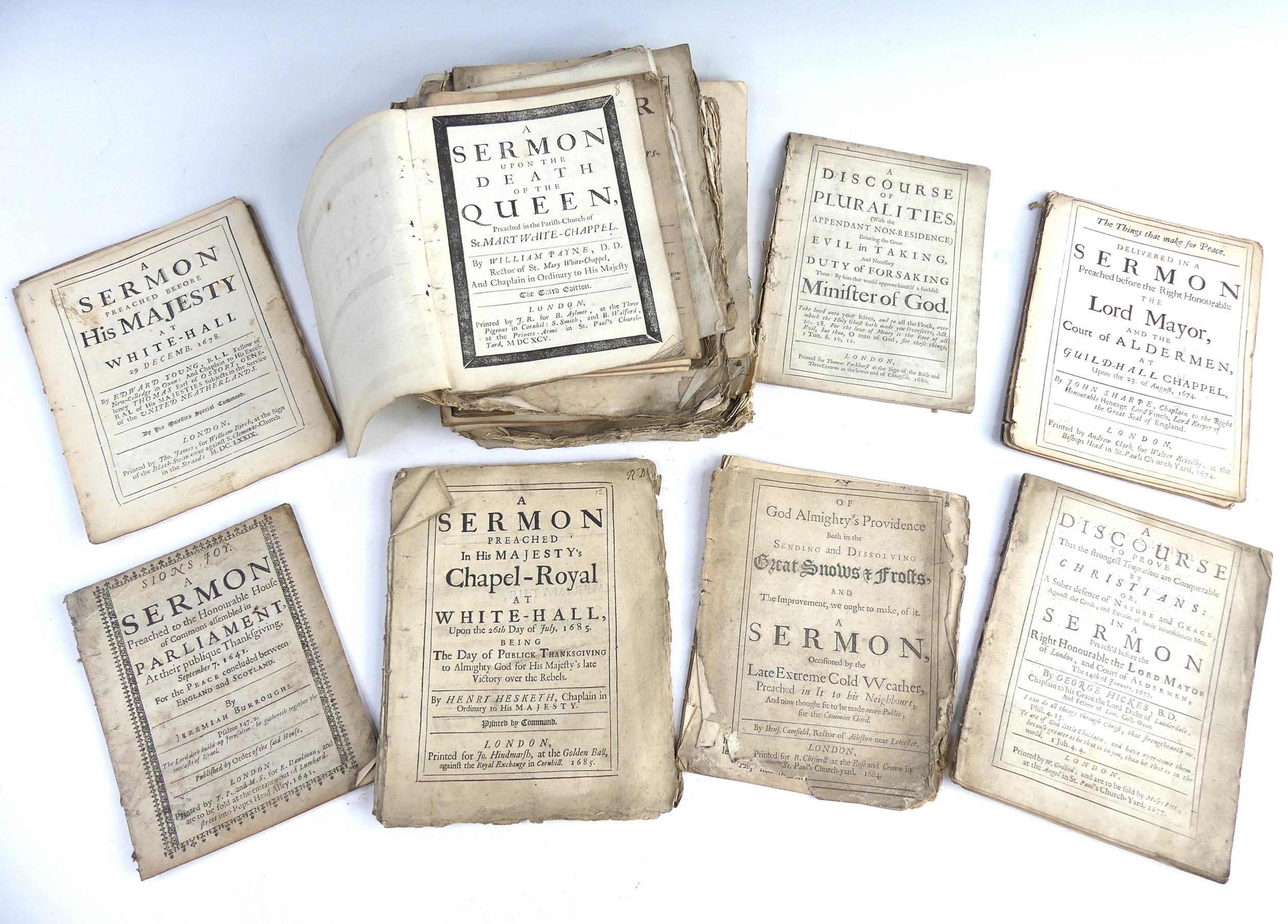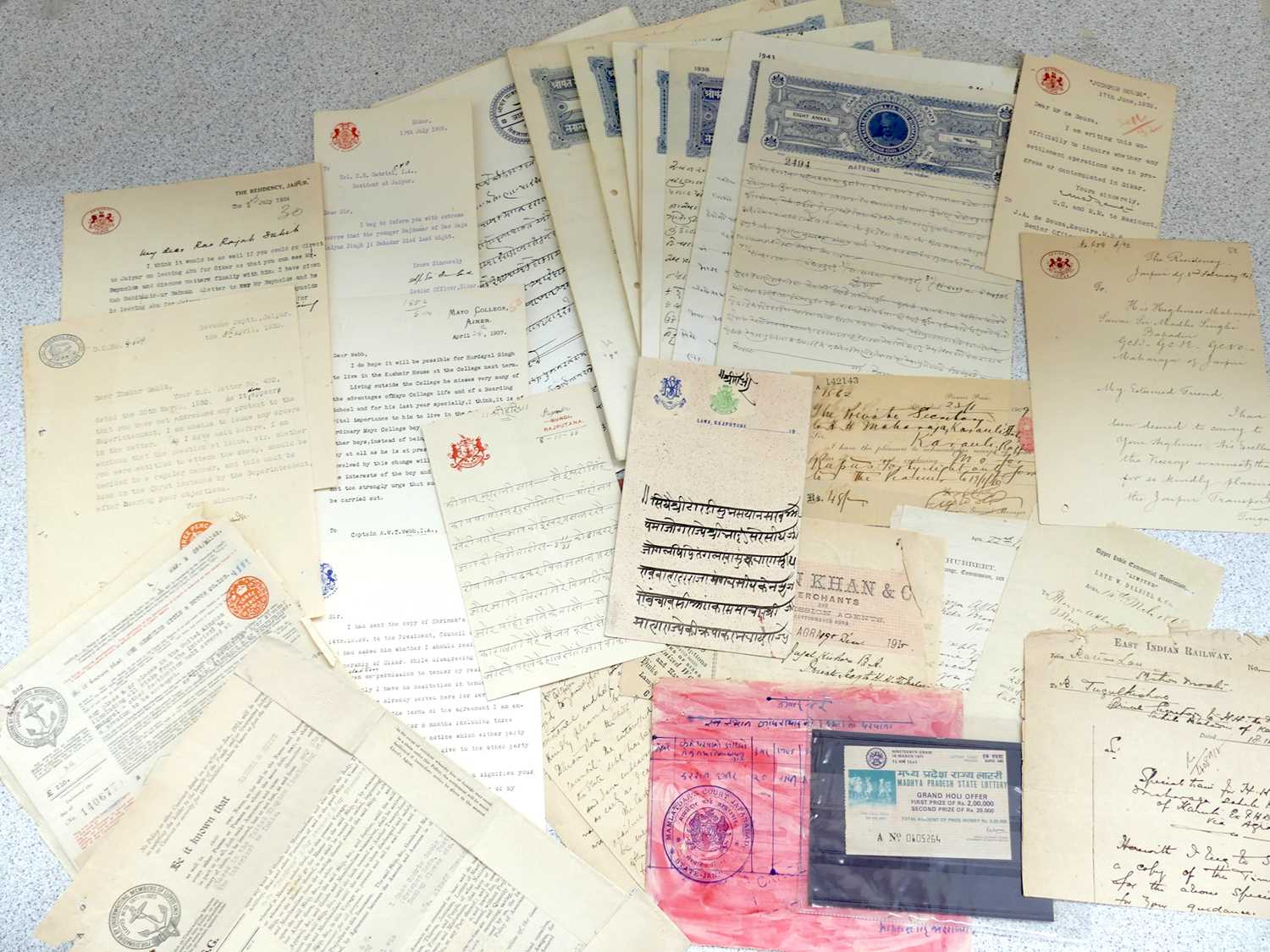The Word

Our 13th September Fine Art & Antiques auction includes a fascinating collection of early modern printed sermons, ranging from theological discourse, to trying to understand why God sent the Great Frost, anti-Catholic preaching, thanksgiving for peace between England and Scotland (the end of the Bishop’s War in 1641, which sadly did not avert the coming storms of Civil War), and also thanksgiving for defeat of the Monmouth Rebellion in 1685.
They include works by some of the prominent preachers of the day including John Tillotson Archbishop of Canterbury who married one of Oliver Cromwell’s nieces, Jeremiah Burrows (one of the “Five Dissenting Brethren” who were part of the Westminster assembly charged with restructuring the Church of England), Henry Hesketh (chaplain to Charles II and William III), historian and philosopher Gilbert Burnet who had the ear of both kings Charles II and William III (but went into exile during James II’s reign), and the controversialist William Clagett ‘of this parish’ who was elected preacher of St Mary’s Church here in Bury St Edmunds.

Although often cynically viewed as a means for Henry VIII to gain a divorce, the English Reformation had a major impact on how ordinary people experienced religion, with consequences which rippled on into the following centuries.
Spreading the Word, as opposed to the Catholic focus on relics, liturgies, and iconology, became the central focus in Protestant worship due to the reformers belief that the Bible was the only source of truth and its message should be accessible to all. The sermon became the mass media of the day; important both for explaining Biblical texts, but also for filtering current events and politics through the lens of the church. Sermons by famous preachers were often big well-attended events, which, coupled with the explosive relatively new technology of the printing press, could reach even further beyond the pulpit.
The printing press, credited to German inventor Johannes Gutenberg, had been around since approx. 1450 and could be seen as the most important factor in the success of the Protestant Reformation on the continent. Pamphlets such as Martin Luther’s 95 Theses became bestsellers and were smuggled into this country by contemporary reformers – including some of our authors listed here.

Printed sermons became big business; it has been estimated that at least 10,000 different sermons were published and sold between the mid-17th and mid-18th centuries.
As England found her feet as a Protestant nation, there was continual discussion (and disputes) as to what exactly the Church of England should be, as well as many breakaway groups of dissenters. This collection includes several examples of discourses (arguments) which were conducted in print between theologians – as well as the obligatory denunciations of Catholics and the Roman Church.
If you worry about the insidious influence of social media with its fake news and conspiracy theories, then at least the online spats between celebrities and politicians are unlikely to spark a war or risk someone losing their head (some of our authors were involved in promulgating the Popish Plot – the big fake news story of the day, which led to show trials and the execution of at least 22 men).
This is a fascinating collection and insight into how a society tried to navigate (or was at least instructed to navigate) tumultuous times when faith was all-important. It provides an excellent research opportunity and there are many partial pamphlets which we have not been able to identify due to missing pages and covers – but someone out there may!
Further details of the contents and images can be found here, and the lot will be available for viewing on 11th & 12th September, before the auction takes place on Saturday the 13th September.
Extra images are available upon request.

Sign up to hear about forthcoming auctions, news and featured lots
Please be assured that we will never pass your details on to third parties and you can unsubscribe at any point.




